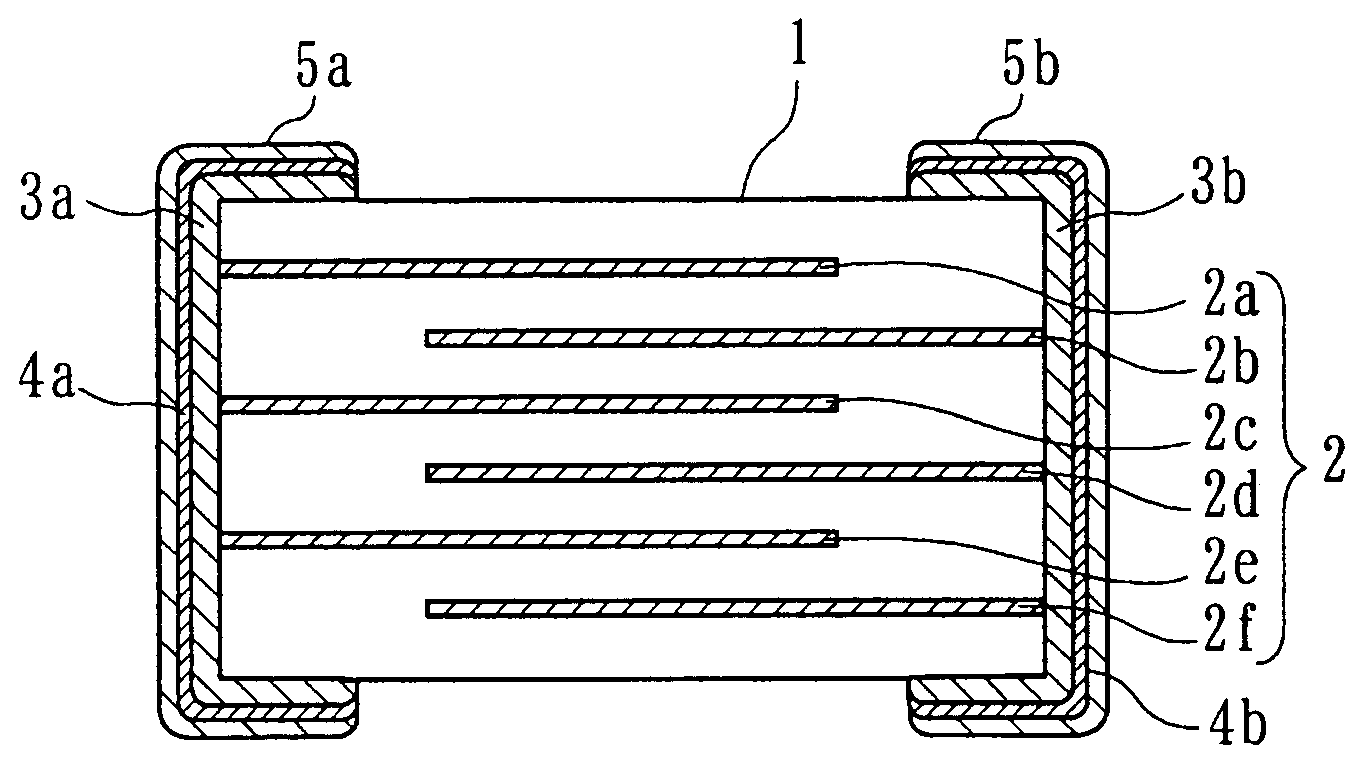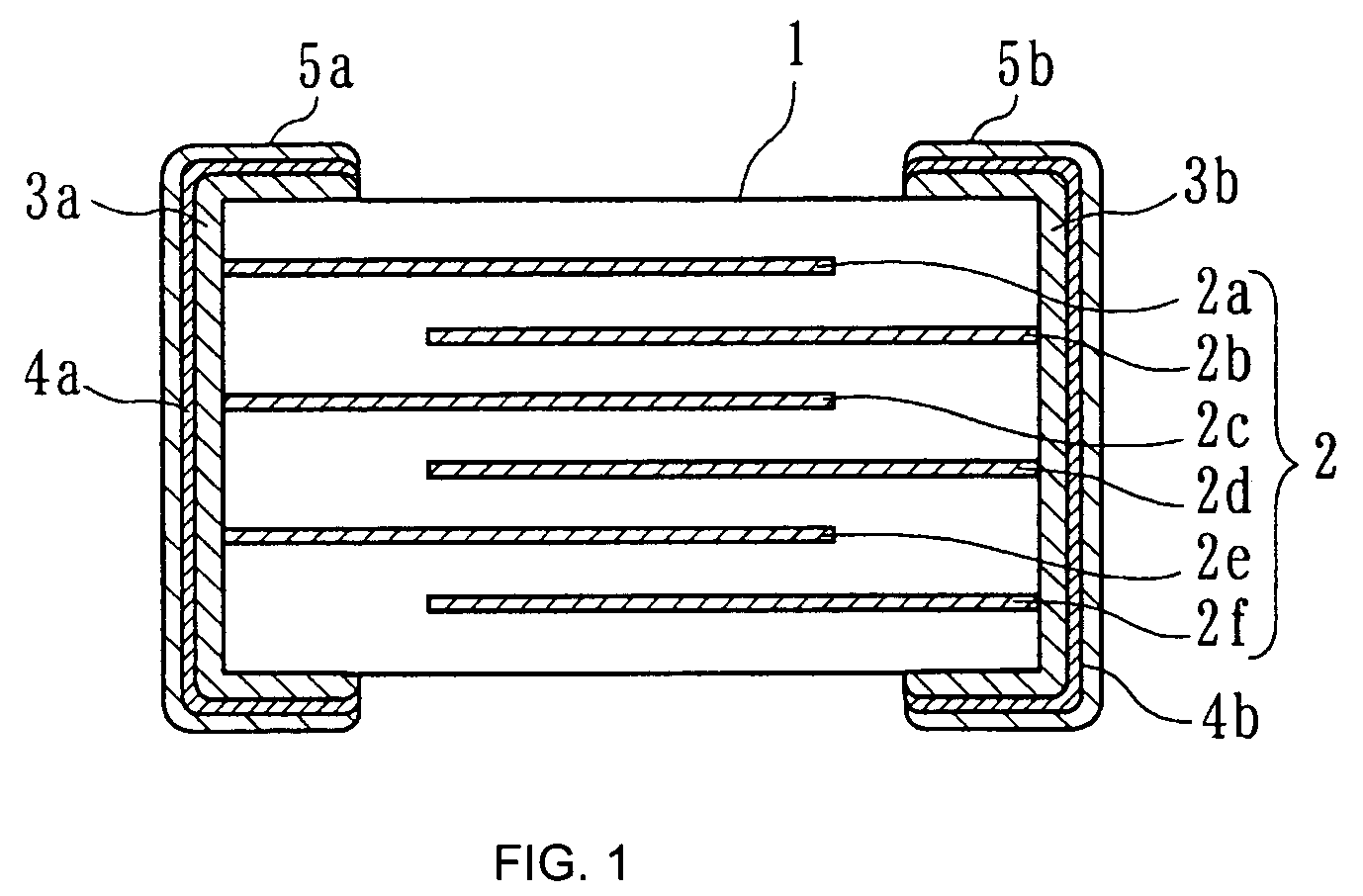Conductive paste and ceramic electronic component
a technology of electronic components and conductive pastes, which is applied in the direction of non-metal conductors, conductors, fixed capacitor details, etc., can solve the problems of reducing the adhesion between the ceramic element and the external conductor, deteriorating the platability of the external conductor, and inferior solder wettability and heat resistance, so as to prevent delamination between the effect of high adhesion of the conductor and the coated member
- Summary
- Abstract
- Description
- Claims
- Application Information
AI Technical Summary
Benefits of technology
Problems solved by technology
Method used
Image
Examples
experiment 1
[0055]In order to obtain a composition shown in Table 1, the following compounds for preparing glass were weighed: B2O3, SiO2, and M2O (K2O, Li2O or Na2O). These compounds were fed in a platinum crucible and then heated at a temperature of 1,000° C. to 1,600° C. for 60 minutes, whereby the compounds were melted into a glass. The molten glass was poured into pure water from the crucible. The resulting glass was wet-ground with a ball mill and then dried, whereby glass powder with an average particle size of 0.5 to 2.0 μm was prepared. According to this procedure, several types of glass powder used in Examples 1 to 8 and Comparative Examples 1 to 4 were prepared.
[0056]These types of glass powder were measured for their softening point with a differential thermal analysis system. An X-ray diffraction analysis showed that these types of glass powder were amorphous.
[0057]Table 1 shows the composition and softening point of the types of glass powder used in the examples and the comparativ...
experiment 2
[0074]Several types of Ag powder used as conductive powder were prepared so as to have an average particle size, an aspect ratio, and a mixing ratio shown in Table 3. The mixing ratio is defined as the ratio of the amount of spherical particles to that of flat particles on a weight basis and may be referred to as a spherical particle-to-flat particle ratio.
[0075]The following materials were mixed: 71% of each type of Ag powder, 5.0% of a type of glass powder, and 24.0% of an organic vehicle on a weight basis. The type of glass powder was the same as that used in Example 2 shown in Table 2, and the organic vehicle was the same as that used in Experiment 1. The mixture was kneaded with a three-roll mill, whereby a conductive paste for forming an external electrode was prepared.
[0076]Several conductive pastes were prepared by this procedure and monolithic ceramic capacitors were prepared by the same procedure as that described in Experiment 1 using the conductive pastes. The monolithic...
PUM
| Property | Measurement | Unit |
|---|---|---|
| particle size | aaaaa | aaaaa |
| particle size | aaaaa | aaaaa |
| particle size | aaaaa | aaaaa |
Abstract
Description
Claims
Application Information
 Login to View More
Login to View More - R&D
- Intellectual Property
- Life Sciences
- Materials
- Tech Scout
- Unparalleled Data Quality
- Higher Quality Content
- 60% Fewer Hallucinations
Browse by: Latest US Patents, China's latest patents, Technical Efficacy Thesaurus, Application Domain, Technology Topic, Popular Technical Reports.
© 2025 PatSnap. All rights reserved.Legal|Privacy policy|Modern Slavery Act Transparency Statement|Sitemap|About US| Contact US: help@patsnap.com


